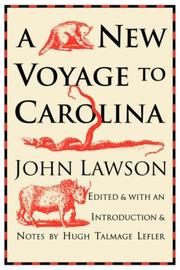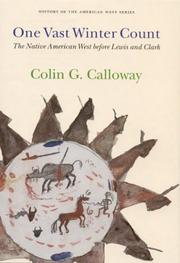| Listing 1 - 10 of 811 | << page >> |
Sort by
|
Book
ISBN: 0874361249 Year: 1974 Publisher: Santa Barbara Oxford American Bibliographical Center-Clio Press
Abstract | Keywords | Export | Availability | Bookmark
 Loading...
Loading...Choose an application
- Reference Manager
- EndNote
- RefWorks (Direct export to RefWorks)
Indians of North America --- -American aborigines --- American Indians --- First Nations (North America) --- Indians of the United States --- Indigenous peoples --- Native Americans --- North American Indians --- Bibliography --- Culture --- Ethnology --- -Bibliography
Book
ISBN: 9027976007 9783110800029 3110800020 0202900789 9780202900780 9789027976000 Year: 1978 Publisher: The Hague : Mouton Publishers,
Abstract | Keywords | Export | Availability | Bookmark
 Loading...
Loading...Choose an application
- Reference Manager
- EndNote
- RefWorks (Direct export to RefWorks)
Indians of North America --- American aborigines --- American Indians --- First Nations (North America) --- Indians of the United States --- Indigenous peoples --- Native Americans --- North American Indians --- Economic conditions --- Culture --- Ethnology
Book
ISBN: 0816504776 0816540330 Year: 1974 Publisher: Tucson University of Arizona press
Abstract | Keywords | Export | Availability | Bookmark
 Loading...
Loading...Choose an application
- Reference Manager
- EndNote
- RefWorks (Direct export to RefWorks)
Indians of North America --- American aborigines --- American Indians --- First Nations (North America) --- Indians of the United States --- Indigenous peoples --- Native Americans --- North American Indians --- Urban residence --- Culture --- Ethnology

ISBN: 0807866881 9780807866887 0807841269 080781041X 9780807810415 9780807841266 9798890872760 Year: 1967 Publisher: Chapel Hill : The University of North Carolina Press,
Abstract | Keywords | Export | Availability | Bookmark
 Loading...
Loading...Choose an application
- Reference Manager
- EndNote
- RefWorks (Direct export to RefWorks)
New Voyage to Carolina
Indians of North America --- American aborigines --- American Indians --- First Nations (North America) --- Indians of the United States --- Indigenous peoples --- Native Americans --- North American Indians --- Culture --- Ethnology

ISBN: 9786610360741 1280360747 0803203349 9780803203341 0803215304 9780803215306 9781280360749 661036074X 9781496206350 1496206355 0803264658 9780803264656 Year: 2003 Publisher: Lincoln : University of Nebraska Press,
Abstract | Keywords | Export | Availability | Bookmark
 Loading...
Loading...Choose an application
- Reference Manager
- EndNote
- RefWorks (Direct export to RefWorks)
Indians of North America --- American aborigines --- American Indians --- First Nations (North America) --- Indians of the United States --- Indigenous peoples --- Native Americans --- North American Indians --- History. --- Culture --- Ethnology
Book
ISBN: 1438457707 9781438457703 9781438457697 1438457693 Year: 2015 Publisher: Albany, New York : SUNY Press,
Abstract | Keywords | Export | Availability | Bookmark
 Loading...
Loading...Choose an application
- Reference Manager
- EndNote
- RefWorks (Direct export to RefWorks)
After World War II, American Indians began relocating to urban areas in large numbers, in search of employment. Partly influenced by the Bureau of Indian Affairs, this migration from rural reservations to metropolitan centers presented both challenges and opportunities. This history examines the educational programs American Indians developed in Chicago and gives particular attention to how the American Indian community chose its own distinct path within and outside of the larger American Indian self-determination movement. In what John J. Laukaitis terms community self-determination, American Indians in Chicago demonstrated considerable agency as they developed their own programs and worked within already existent institutions. The community-based initiatives included youth programs at the American Indian Center and St. Augustine's Center for American Indians, the Native American Committee's Adult Learning Center, Little Big Horn High School, O-Wai-Ya-Wa Elementary School, Native American Educational Services College, and the Institute for Native American Development at Truman College. Community Self-Determination presents the first major examination of these initiatives and programs and provides an understanding of how education functioned as a form of activism for Chicago's American Indian community.
Indians of North America --- American aborigines --- American Indians --- First Nations (North America) --- Indians of the United States --- Indigenous peoples --- Native Americans --- North American Indians --- Education --- History. --- Culture --- Ethnology
Book
ISBN: 1681239140 9781681239149 9781681239125 9781681239132 Year: 2017 Publisher: Charlotte, North Carolina : Information Age Publishing, Inc.,
Abstract | Keywords | Export | Availability | Bookmark
 Loading...
Loading...Choose an application
- Reference Manager
- EndNote
- RefWorks (Direct export to RefWorks)
Plaintext description.
Indians of North America --- American aborigines --- American Indians --- First Nations (North America) --- Indians of the United States --- Indigenous peoples --- Native Americans --- North American Indians --- Education --- Culture --- Ethnology
Book
ISBN: 0295999500 9780295999500 0295994274 1785398784 9781785398780 9780295994277 Year: 2015 Publisher: Seattle : Bill Holm Center for the Study of Northwest Coast Art, Burke Museum, in association with University of Washington Press,
Abstract | Keywords | Export | Availability | Bookmark
 Loading...
Loading...Choose an application
- Reference Manager
- EndNote
- RefWorks (Direct export to RefWorks)
The 50th anniversary edition of this classic work on the art of Northwest Coast Indians now offers color illustrations for a new generation of readers along with reflections from contemporary Northwest Coast artists about the impact of this book. The masterworks of Northwest Coast Native artists are admired today as among the great achievements of the world's artists. The painted and carved wooden screens, chests and boxes, rattles, crest hats, and other artworks display the complex and sophisticated northern Northwest Coast style of art that is the visual language used to illustrate inherited crests and tell family stories. In the 1950s Bill Holm, a graduate student of Dr. Erna Gunther, former Director of the Burke Museum, began a systematic study of northern Northwest Coast art. In 1965, after studying hundreds of bentwood boxes and chests, he published Northwest Coast Indian Art: An Analysis of Form. This book is a foundational reference on northern Northwest Coast Native art. Through his careful studies, Bill Holm described this visual language using new terminology that has become part of the established vocabulary that allows us to talk about works like these and understand changes in style both through time and between individual artists' styles. Holm examines how these pieces, although varied in origin, material, size, and purpose, are related to a surprising degree in the organization and form of their two-dimensional surface decoration. The author presents an incisive analysis of the use of color, line, and texture; the organization of space; and such typical forms as ovoids, eyelids, U forms, and hands and feet. The evidence upon which he bases his conclusions constitutes a repository of valuable information for all succeeding researchers in the field. Replaces ISBN 9780295951027
Indians of North America --- Indian art --- American aborigines --- American Indians --- First Nations (North America) --- Indians of the United States --- Indigenous peoples --- Native Americans --- North American Indians --- Culture --- Ethnology
Book
ISBN: 1139583603 1108060188 Year: 1775 Publisher: Place of publication not identified : Cambridge : publisher not identified, Cambridge University Press
Abstract | Keywords | Export | Availability | Bookmark
 Loading...
Loading...Choose an application
- Reference Manager
- EndNote
- RefWorks (Direct export to RefWorks)
A trader who lived and worked for four decades among Native Americans and became a keen observer of their languages, customs and politics, James Adair (fl.1735-75) studied the Catawba, Cherokee, Muscogee, Chickasaw and Choctaw, compiling extensive ethnographic information. Upon publication in 1775, this work was unique in its treatment of these peoples as well as their interaction with white traders and colonists. The book also propounds a theory, popular at the time, that the ancestors of Native Americans were the lost tribes of Israel; as such it remains a valuable source for the history of this idea. In part autobiographical, the work reflects Adair's involvement in trading, local politics and warfare with the British and French. His observations remain of great interest to scholars of American history and ethnography.
Indians of North America --- Origin --- American aborigines --- American Indians --- First Nations (North America) --- Indians of the United States --- Indigenous peoples --- Native Americans --- North American Indians --- Culture --- Ethnology
Book
ISBN: 0816548781 0816515824 Year: 1995 Publisher: Tucson : University of Arizona Press,
Abstract | Keywords | Export | Availability | Bookmark
 Loading...
Loading...Choose an application
- Reference Manager
- EndNote
- RefWorks (Direct export to RefWorks)
Indians of North America --- Antiquities. --- American aborigines --- American Indians --- First Nations (North America) --- Indians of the United States --- Indigenous peoples --- Native Americans --- North American Indians --- Culture --- Ethnology
| Listing 1 - 10 of 811 | << page >> |
Sort by
|

 Search
Search Feedback
Feedback About UniCat
About UniCat  Help
Help News
News